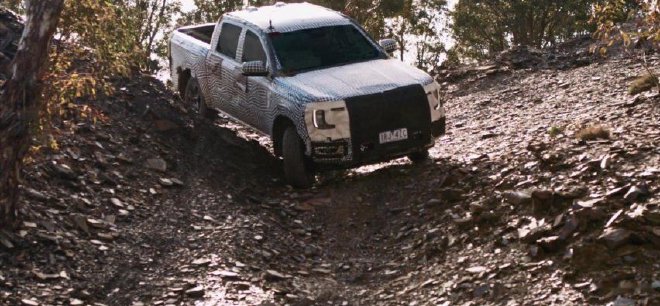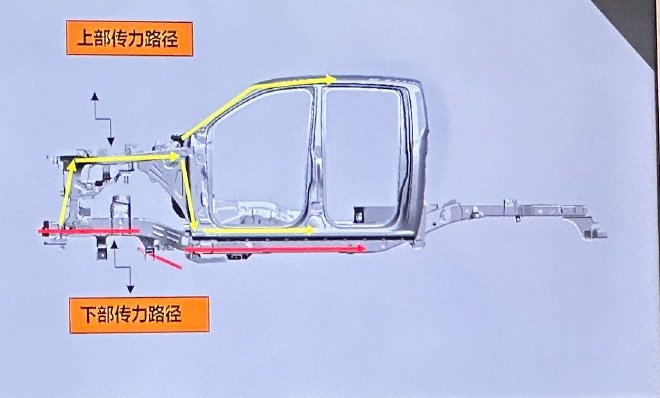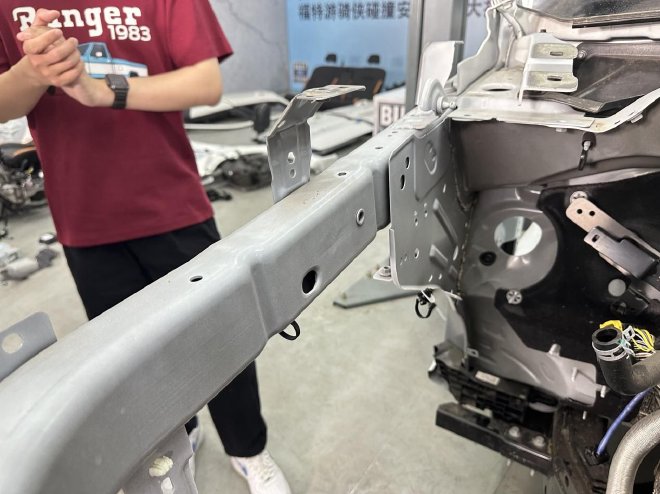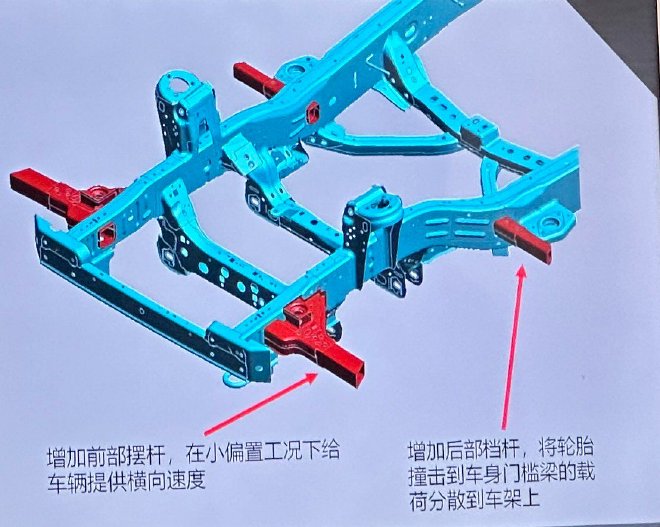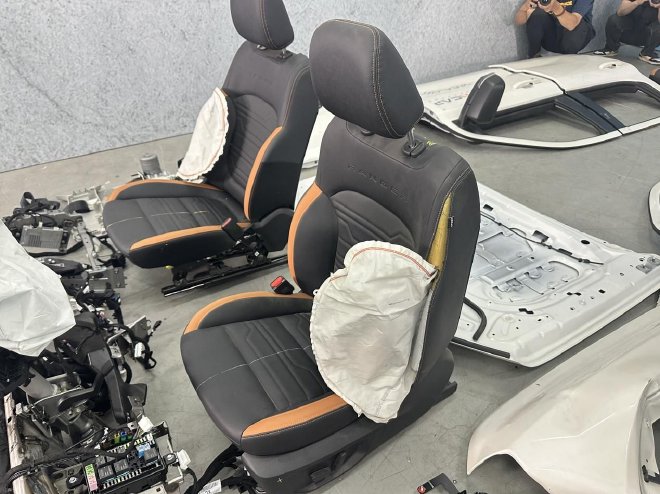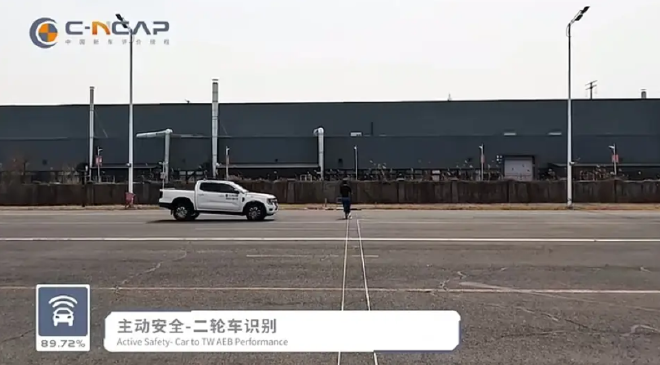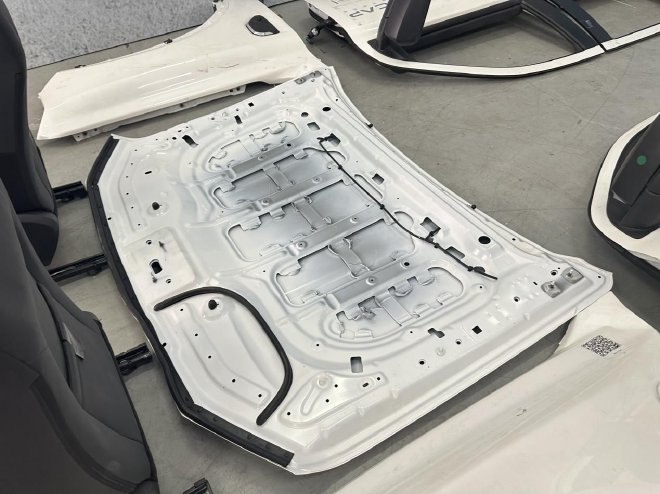Recently, the Ford Ranger achieved a five-star safety rating in the latest round of crash tests conducted by C-NCAP, making it the first pickup truck in the automotive industry to receive this certification.
It is worth mentioning that the Ford Ranger achieved this honor with a comprehensive score of up to 90.0%. Specifically, the Ford Ranger’s active safety comprehensive score is 89.72%, pedestrian safety comprehensive score is 73.05%, and occupant protection comprehensive score is 94.29%, making it quite comprehensive. It is worth mentioning that the Ford Ranger has also become the world’s first pickup truck to achieve the three major NCAP five-star safety certifications from China C-NCAP, Europe E-NCAP, and Australia A-NCAP. High testing standards.
What makes the Ford Ranger stand out in a crowd of pickup trucks? The new vehicle is built on Ford’s latest and most advanced third-generation midsize pickup platform, giving it a natural technological advantage. In addition, the Ford Ranger underwent a rigorous four-month testing at the Ford Youyangshan vehicle test site, known as the “car scrapyard,” simulating 10 years of vehicle wear and tear in real-world conditions, creating a hardcore pickup truck far above industry standards. Vehicles at YYPG undergo comprehensive testing for safety, fuel consumption, emissions, and noise, in addition to power and durability tests. The durability testing standard exceeds the industry by 30%, with each vehicle undergoing a verification mileage of up to 1.5 million kilometers. The front cabin hydraulic pipe beam absorbs energy.
Engineers at Ford Bronco achieved great results not only because of rigorous testing, but also due to their meticulous pursuit of details. For example, the principle of the non-load-bearing body is to suspend the body above the frame. While the frame can resist deformation and allow the vehicle to handle rough off-road conditions, its strong rigidity often leads to more serious damage to the vehicle after a violent impact because the body cannot absorb energy and has large vibrations. Engineers designed a unique front cabin hydraulic pipe beam to help divert force to both the body and frame during collisions, ensuring that both the body and frame receive force and distribute collision pressure.
Not only that, engineers designed clever crush slots for the front cabin hydraulic pipe beam, ensuring rigidity while better guiding the collapse of the hydraulic pipe beam after impact and absorbing the energy generated by the collision. Two clever limit arms.
The Ford Bronco still cleverly designed two high-strength steel limit arms at the front and rear of the front wheels.
The front limit arm acts like a lever in a biased collision, causing the vehicle to slide sideways, greatly reducing the impact force on the vehicle; the rear limit arm aims to prevent the front wheels from intruding into the passenger space in a frontal collision, ensuring the safety of the front passengers’ legs.
Ford Bronco uses 1580MPa high-strength boron steel in key areas like B-pillars and door frames, with strength over 4 times that of regular steel, reaching the strength level of aircraft landing gear, able to withstand over 15 tons of pressure per square centimeter, maximizing passenger safety. Unique airbag design.
Ford Bronco has up to 8 safety airbags, including front driver and passenger airbags, knee airbags, side chest airbags, and side air curtains. The 55L front airbag is designed to prevent occupants from sliding out in a collision. The front airbag of the Ford Bronco has a special concave design to reduce chest impact. The side air curtains will deploy in a collision, and the RCM rollover sensor ensures rapid deployment in case of significant vehicle displacement. This maximizes occupant safety. Comprehensive active safety features.
In addition to passive safety, the Ford Ranger stands out with a comprehensive score of 89.72% in active safety performance evaluation among similar models. The Ford Ranger in the Chinese market is equipped with highly customized high-spec redundant hardware, including over 30 sensors such as 12 ultrasonic radars, 4 HD surround-view cameras, and 4 HD side-view cameras, enabling full perception of the vehicle’s surrounding environment. Its advanced features like ACC adaptive cruise control, TJA traffic congestion assistance system, and DCLC intelligent lane change assist provide real-time road condition monitoring and potential risk warnings for drivers, ensuring driving safety. It is worth mentioning that the Ford Ranger is the first in the pickup industry to introduce an L2.9 level intelligent driving assistance system, including NGA smart navigation driving assistance and APA automatic parking technology, which, under driver supervision, can seamlessly navigate from point A to point B on high-precision map-covered roads. Although these functions are common today, it’s important to note that it is a pickup truck model. Pedestrian protection is equally important.
For a pickup truck, pedestrian protection is usually a serious issue. The height of the pickup truck makes it more difficult to control the harm to pedestrians in a collision. Most manufacturers choose to ignore this aspect. However, Ford engineers choose to use special materials or shapes in the grille, hood, and lower edge of the windshield to minimize harm to pedestrians. In summary: Consumers often do not demand much in terms of safety for a pickup truck due to its utility. But Ford shows us through action that safety is important for all types of vehicles. Pickup trucks also need to undergo rigorous testing and can achieve excellent safety performance through attention to detail. We hope that more manufacturers will focus on safety in addition to price and features, providing consumers with better products!

